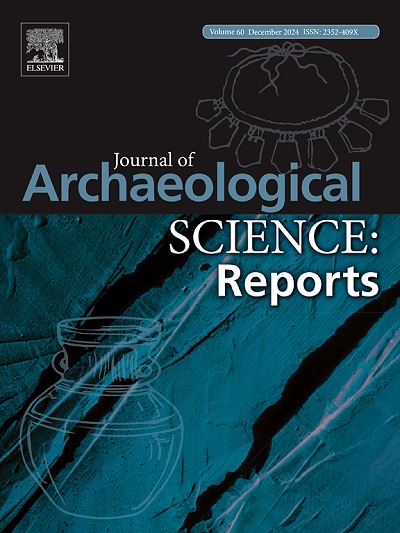New regional-scale classic maya population estimates and settlement organization models through airborne lidar scanning
IF 1.5
2区 历史学
0 ARCHAEOLOGY
引用次数: 0
Abstract
Vast tracts of tropical forest of the Yucatan Peninsula have remained largely uninhabited for the last 1000 years representing a rare opportunity to document the settled landscape of entire regions of an ancient civilization, the Classic Maya (300–900 CE), undisturbed by subsequent settlement. At the same time, limited access to this landscape has hindered regional scale surveys outside well-known major centers until recently. Today, airborne lidar mapping provides extensive and fine-grained data to document ancient Maya settlement on a previously unattainable scale. Using updated analytical methods, here we aggregate a diverse set of public and privately commissioned lidar mapping, including reprocessed environmental lidar data from Southern Campeche and Southern Quintana Roo, Mexico with enhanced structure visibility, to update population estimates to between 9.5 and 16 million people in a large central area of the Classic Maya Lowlands. Beyond population density, we highlight a uniform model for the spatial organization of settlement and agriculture structuring political and economic interactions in urban and rural zones alike within a 95,000 km2 area of the Central Maya Lowlands. The observed distribution of public plazas, residential zones and agricultural fields suggest that ancient Maya urbanism was more widespread, more populous and more efficiently structured for periodic interaction among elite and non-elites than previously thought. One-Sentence Summary: Combining lidar data from environmental and archaeological surveys, this study presents updated population estimates and a uniform model for Classic Maya urban and rural settlement organization.
通过机载激光雷达扫描的新区域尺度经典玛雅人口估计和聚落组织模型
尤卡坦半岛的大片热带森林在过去的1000年里基本上无人居住,这是一个难得的机会,可以记录古代文明——经典玛雅(公元300-900年)——整个地区的定居景观,没有被后来的定居所干扰。与此同时,直到最近,对这一景观的有限进入阻碍了知名主要中心以外的区域尺度调查。今天,机载激光雷达测绘提供了广泛而精细的数据,以以前无法实现的规模记录古代玛雅人的定居点。使用最新的分析方法,我们收集了一系列不同的公共和私人委托的激光雷达地图,包括来自墨西哥坎佩切南部和金塔纳罗奥南部的再处理环境激光雷达数据,增强了结构可见性,更新了经典玛雅低地中心地区950万至1600万人口的人口估计。除了人口密度,我们还强调了一个统一的定居和农业空间组织模型,该模型在中玛雅低地95,000平方公里的区域内构建了城市和农村地区的政治和经济互动。观察到的公共广场、住宅区和农田的分布表明,古玛雅的城市化比以前认为的更广泛,人口更多,精英和非精英之间的定期互动结构更有效。结合来自环境和考古调查的激光雷达数据,本研究提出了最新的人口估计和经典玛雅城乡聚落组织的统一模型。
本文章由计算机程序翻译,如有差异,请以英文原文为准。
求助全文
约1分钟内获得全文
求助全文
来源期刊

Journal of Archaeological Science-Reports
ARCHAEOLOGY-
CiteScore
3.10
自引率
12.50%
发文量
405
期刊介绍:
Journal of Archaeological Science: Reports is aimed at archaeologists and scientists engaged with the application of scientific techniques and methodologies to all areas of archaeology. The journal focuses on the results of the application of scientific methods to archaeological problems and debates. It will provide a forum for reviews and scientific debate of issues in scientific archaeology and their impact in the wider subject. Journal of Archaeological Science: Reports will publish papers of excellent archaeological science, with regional or wider interest. This will include case studies, reviews and short papers where an established scientific technique sheds light on archaeological questions and debates.
 求助内容:
求助内容: 应助结果提醒方式:
应助结果提醒方式:


